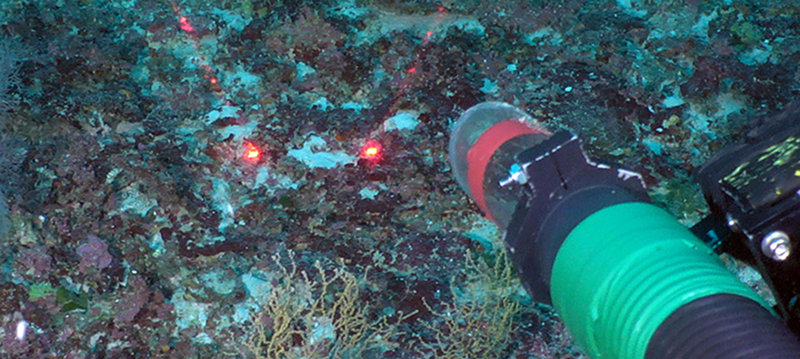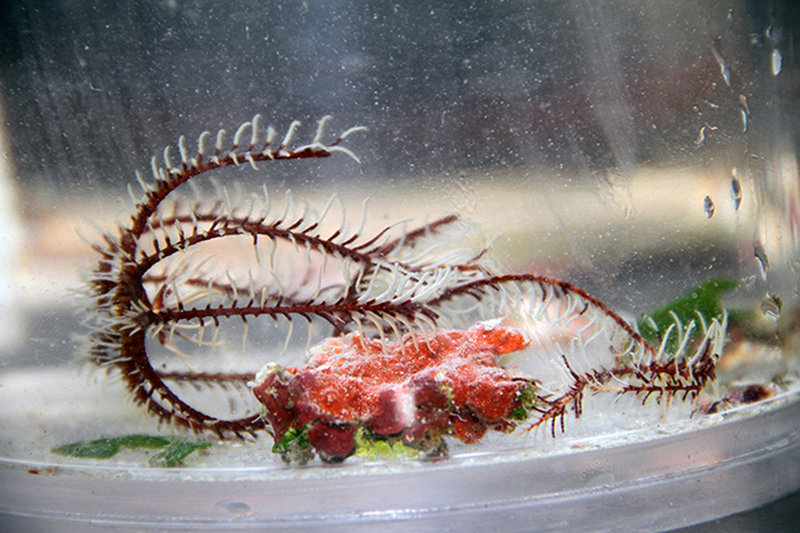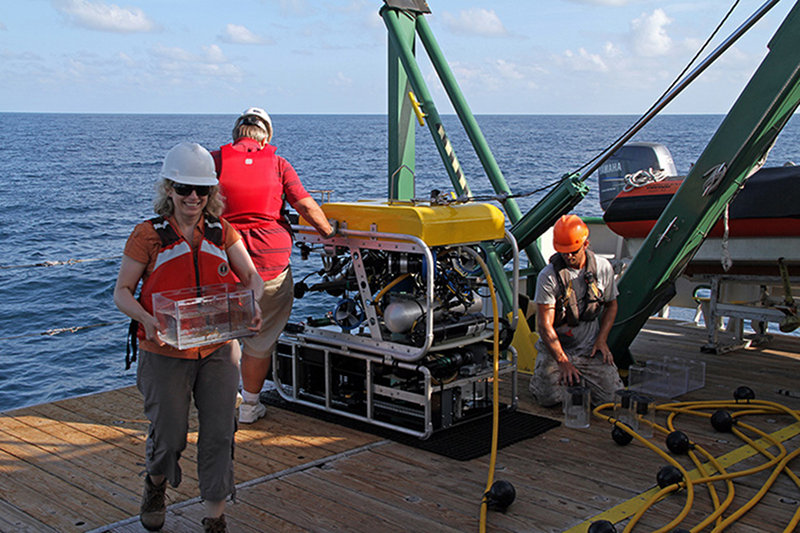
By Brian Cousin - Florida Atlantic University - Harbor Branch
September 1, 2015

The Mohawk remotely operated vehicle is poised to collect a sample of octocoral. Selective sampling using suction or a claw is less damaging to the seafloor than dragging a trawl net and can take a minimal amount of an organism so that it can continue to grow. Image courtesy of Coral Ecosystem Connectivity 2015 Expedition. Download larger version (jpg, 896 KB).
The first day of September brought us some of the best weather we have had out here. Maybe it was the best, or maybe it just seemed so because ‘September’ sounds like the beginning of fall and the cooler temperatures that come with the season. Though we have entered peak hurricane season in Florida, the fine day erased thoughts of the remnants of Erika, Danny, and whoever follows in the hurricane list of names.

A sample bucket from the remotely operated vehicle contains a crinoid. The name of the class Crinoidea comes from the Greek for ‘lily form’, hence the term ‘sea lilies’, as stalked crinoids are known. A common term for unstalked crinoids, like this one, is feather star. Image courtesy of Brian Cousin, FAU Harbor Branch. Download larger version (jpg, 578 KB).
The Mohawk remotely operated vehicle (ROV) made two dives on Pulley Ridge and returned each time with good samples for our taxonomic identifications. We are unable to identify many of the organisms out here at sea, so they will go under the microscope or be subject to genetic evaluation in shore-based labs when we return.

Kimberly Puglise carries a sample from the Bio Box at the front of the remotely operated vehicle to the shipboard wet lab while Jason White removes suction sample buckets from the back of the ROV. Image courtesy of Brian Cousin, FAU Harbor Branch. Download larger version (jpg, 650 KB).
Collections for the day included sponges, gorgonians, coral, and algae. They are all sessile organisms, meaning they are fixed to the bottom and don’t move around. This certainly helps make them easier targets for collection than even the smallest reef fish. Fish species are identified through visual sightings when the ROV is in the water and then post-cruise review of the recorded video.
To make up for their relative vulnerability due to being unable to move away or hide from potential predators, some of the sessile invertebrates, like sponges, produce chemicals for their defense. These chemicals make them of interest for biomedical investigation as potential medicines.
Tomorrow will be our last day for ROV operations before the research vessel heads back to its homeport at the University of Miami, so we are hoping for another fine September day at sea and some productive ROV explorations beneath the waves.